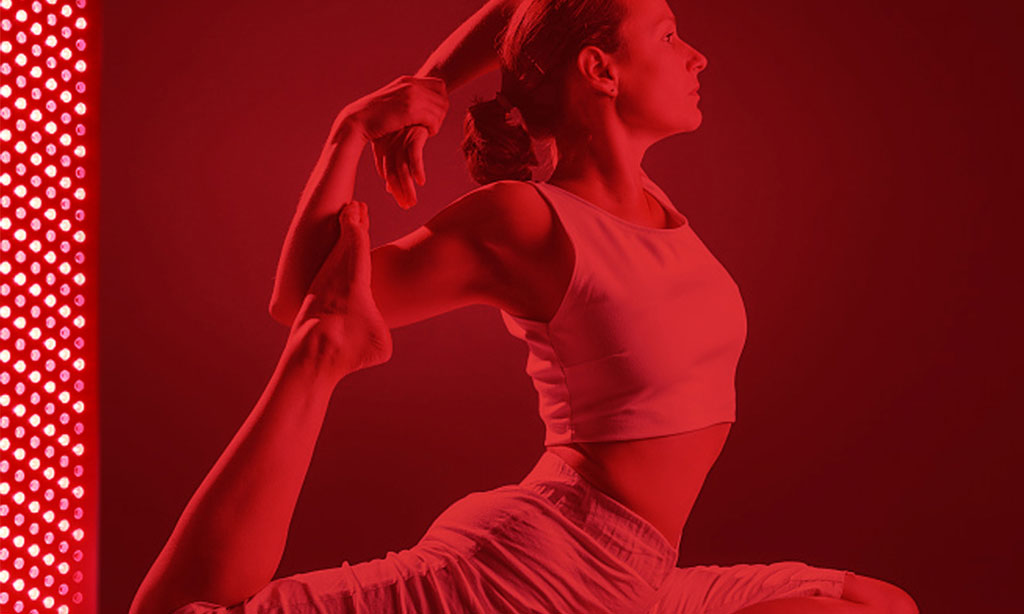Red Light, Green Light: Red Light Therapy and the Input-Output Equation

Most fitness journeys look a lot like that childhood game — one voice calling out ‘red light’ and ‘green light’ in alternation, the crowd running hard on green and coming to a halt on red.
In the gym, some weeks are green light weeks. The client achieves a personal goal, proves their commitment, and the numbers — on the scale or on the squat rack — echoes their efforts. Then, as if on cue, the voices of pain, injury, and burn out scream ‘red light’. Morale goes down, progress reverses, and the client is met with numbers that seem like the inverse of their efforts.
When an input-output equation doesn’t add up, disappointment and discouragement are inevitable. But, fitness professionals know progress is a delicate balance between training and recovery, commitment and knowledge, elbow grease and targeted solutions. Even professional athletes, who are paid to tailor and tweak this equation, aren’t able to do it alone. They use coaches to monitor their safety, biomarkers to understand their somatic signals, and expensive technology to optimize their recovery.
Recently, they’ve also been using red light therapy.
RED LIGHT THERAPY FOR RED LIGHT DAYS
Red light therapy, known also as Photobiomodulation, refers to the non-invasive practice of using red and near infrared wavelengths to penetrate the skin. Originally tested as a strategy for growing plants in space, red light therapy has been recognized since the 1990s for its untapped potential, and the subsequent years have brought more testing and wider applications.
Today’s evidence proves red light produces a biochemical effect on mitochondria. The mitochondria are the powerhouse of the cell, controlling energy production; to promote mitochondrial function is to improve muscle growth and repair. A recent grassroots study monitored a group of untrained individuals through eight weeks of training and found those that combined weight training with light therapy were able to double their muscle size gains.
Inflammation is both the antidote and the byproduct of progress; muscle gain often brings with it muscle damage. Researchers believe the ability of red light therapy to increase levels of CO2 can inhibit inflammatory cytokines and allow more efficient repair without scarring. Similarly, lactic acid is a loud voice when it comes to fatigue, making workouts feel infinitely harder. Red light therapy is known to reduce lactic acid, allowing clients to decrease recovery time and avoid the dreaded stiffness associated with leg day.
Beyond the production of cellular energy, the reduction of inflammation and the treatment of lactic acid, red light therapy has proven effective for skin rejuvenation, improved sleep, wound healing, arthritis, and fibrosis. Years of research has shown the benefits are hard to overstate.
RED LIGHT THERAPY IN YOUR PRACTICE
With the exponential advancements of technology, red light therapy has become an affordable addition to any health club or gym, and even a viable at home solution for clients looking to maximize their benefits. Gaining popularity at clubs like Planet Fitness, the treatment is a way to maximize both client results and company revenue.
Red light therapy is an addition that will differentiate your operation. After the recent shift in our understanding of public health, red light therapy will emerge as the only solution for group recovery. Saunas and steam rooms require intensive upkeep and thorough cleaning between uses, but red light therapy uses a different spectrum of light to achieve results, allowing guests to reap more benefits in a safer and more hygienic way.
As your clients await a return to business and carry out their fitness plans at home, red light therapy provides the perfect opportunity to stay in touch and extend your coaching. With affordable units that can be intuitively installed and used from home, you can help your clients make that investment on the recovery end of their health and fitness. When it’s time to return, enhanced membership packages can be offered with scheduled red light treatment, and guests can collaborate with their trainers to target their specific recovery needs.
The wealth of knowledge in the fitness industry is vast. New exercises, emerging theories, and continuing research makes the pursuit of health and fitness one that requires great commitment and collaboration. Red light therapy has been confirmed and reconfirmed as a jack of all trades when it comes to safety, healing, and recovery. Affordable treatments and portable panels are making it easy for fitness professionals to incorporate the treatment into their practice. When the health of your clients is your number one priority, investing in their recovery is a non-negotiable. Red light therapy is the safest and quickest way to have more green light days in your fitness journey.

